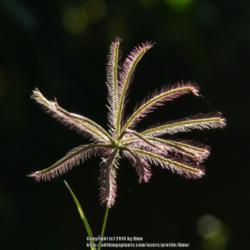
Bermudagrass (Cynodon dactylon) is a terrible nuisance in gardens in the southern half of the United States. Improved turfgrass strains often behave themselves, but primitive forms are very difficult to control. It spreads by creeping stems, underground stolons, and seeds. Maintain a broad buffer area between your garden and stands of wild bermudagrass. Dig out sprigs several times each year, and mulch to make digging easier. Brush with an organic herbicide containing acetic acid monthly if this grass grows so close to other plants that digging is impossible.
Weed Control TechniquesDigging. Weeds that regrow from persistent roots must be dug. Use a spade or digging fork to dig
Mulching. Mulch that's more than 2 inches thick can deprive most weed seeds of the light they need to germinate and grow. In vegetable and flower gardens, you can mulch with wheat straw (which has fewer weed seeds than hay), chopped leaves, grass clippings, or many other organic materials. Where weeds are numerous, try covering the soil with four to six sheets of newspaper. Then cover the newspapers with 2 to 3 inches of organic mulch. Pieces of scrap carpeting make a good weed-suppressing mulch to use in pathways between rows. When mulching beneath shrubs and trees, place a sheet of landscape fabric over the soil, then cover it with 3 inches of organic mulch. An edging (a 4- to 6-inch-wide strip of rot-proof material driven into the ground vertically) of brick, stone, or metal will help the mulch stay put, halt invasion by creeping weeds, and make the bed look neat and well groomed.spreading perennials, such as bindweed, Canada thistle, and quackgrass. Start digging a foot away from the plant's center to loosen the soil. Then lift the weed from beneath, which reduces how many root pieces are likely to break off and regrow. Dandelion, dock, and other weeds that grow from persistent taproots can be dug the same way, or you can use a special fork-like tool called a dandelion weeder to pry them up. Dig very large taproots that are difficult to pry loose. In lawns and other places where digging dandelions is not practical, use a sharp knife to slice off the leaves and the top inch or two of taproot at a diagonal angle. Some weeds that are easily pulled when the soil is moist must be dug from dry soil.
Organic herbicides. There are several herbicides made from natural ingredients. Those that contain clove oil (eugenol) give the best control of young broadleaf weeds. Products containing acetic acid, often in combination with citric acid, do a good job on young grasses. Some products contain both clove oil and acetic acid, so they are useful for a broad variety of weeds. Soap-based herbicides dehydrate leaves by cutting through their protective layer of cutin. All of these types of organic herbicides work best on young weeds and pose only a temporary setback to well-rooted perennial weeds. To minimize damage to neighboring plants, spray only in dry, still weather. To maximize effectiveness, spray young weeds when temperatures are above 70 degrees F and the sun is shining brightly. Be aware that repeated applications of a product containing acetic acid (which is very strong vinegar) can lower the soil's pH, making it more acidic.
Photo courtesy of David Liebman
 |
 |
 |
 |
 |
 |
 |
 |